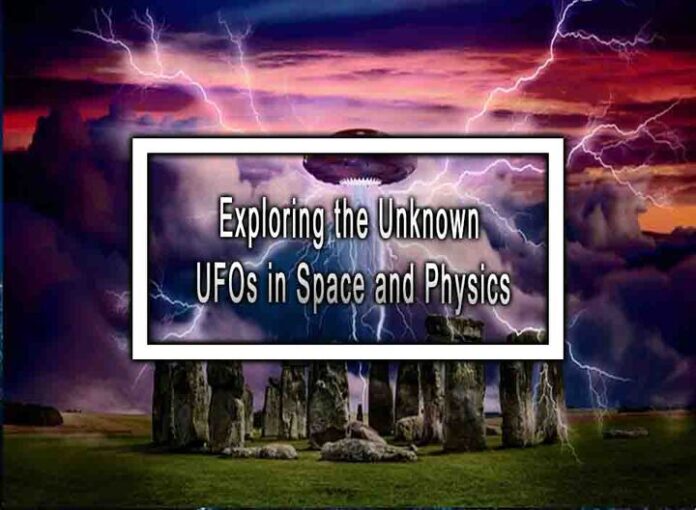Exploring UFOs (Unidentified Flying Objects) in the context of space and physics is a complex and multifaceted endeavor. While the term “UFO” is often associated with sightings of unexplained aerial phenomena, it’s important to approach this topic with scientific rigor and open-minded inquiry. Here are several aspects to consider when exploring UFOs from the perspectives of space and physics:
Data Collection and Analysis:
- Collecting credible and verifiable data is essential for any scientific investigation. This includes eyewitness accounts, radar data, photographs, and videos. Scientists and researchers aim to analyze this data objectively.
AstronomyPhenomena:
- Some UFO sightings can be attributed to known astronomical phenomena, such as meteors, satellites, or celestial events like comets or planets. Understanding these natural occurrences is a key aspect of UFO investigation.

- Some UFO sightings can be attributed to known astronomical phenomena, such as meteors, satellites, or celestial events like comets or planets. Understanding these natural occurrences is a key aspect of UFO investigation.
Aircraft and Technology:
- Many UFO sightings involve advanced aircraft, drones, or experimental military technologies. Researchers examine these technologies to determine if they explain some sightings.
Psychological and Perceptual Factors:
- Human perception and psychology can contribute to UFO sightings. Researchers study cognitive biases, optical illusions, and psychological factors that may lead to misidentifications or perceptions of unusual phenomena.
Physics and Propulsion:
- The physics of UFO propulsion, if they are indeed technologically advanced craft, is a topic of interest. Researchers explore propulsion mechanisms, energy sources, and the feasibility of achieving high-speed and maneuverability observed in some reports.
Aerospace Engineering:
- Aerospace engineers examine the flight characteristics of UFOs, including their aerodynamics, propulsion, and materials. This analysis helps assess the technological feasibility of observed behaviors.
Space Exploration and Extraterrestrial Hypotheses:
- Some speculate that UFOs could be of extraterrestrial origin. Space agencies and scientists involved in astrobiology explore the possibility of life beyond Earth and the potential for extraterrestrial visitors.
Scientific Investigation:
- The scientific method involves formulating hypotheses, conducting experiments, and peer-reviewed analysis. Scientists investigate UFO reports to understand the nature of unexplained phenomena.
Instrumentation and Technology:
- Advancements in sensor technology, including radar, lidar, and infrared imaging, can aid in the identification and tracking of unidentified objects in the sky.
International Collaboration:
- UFO investigations often involve international collaboration among scientific organizations, military agencies, and governmental bodies. Sharing data and expertise is important in comprehensively studying these phenomena.
Public Interest and Outreach:
- Due to public interest, scientific organizations engage in public outreach and education to foster understanding of UFO investigations and the scientific process.
Ethical Considerations:
- Researchers consider ethical aspects, such as privacy concerns, the responsible handling of data, and maintaining transparency in reporting findings.
It’s essential to emphasize that the term “UFO” simply denotes an object that has not been identified, not necessarily an extraterrestrial spacecraft. The scientific community approaches UFO phenomena with a commitment to rigorous analysis, seeking natural explanations whenever possible, while also remaining open to the possibility of discovering new and previously unexplained phenomena.











